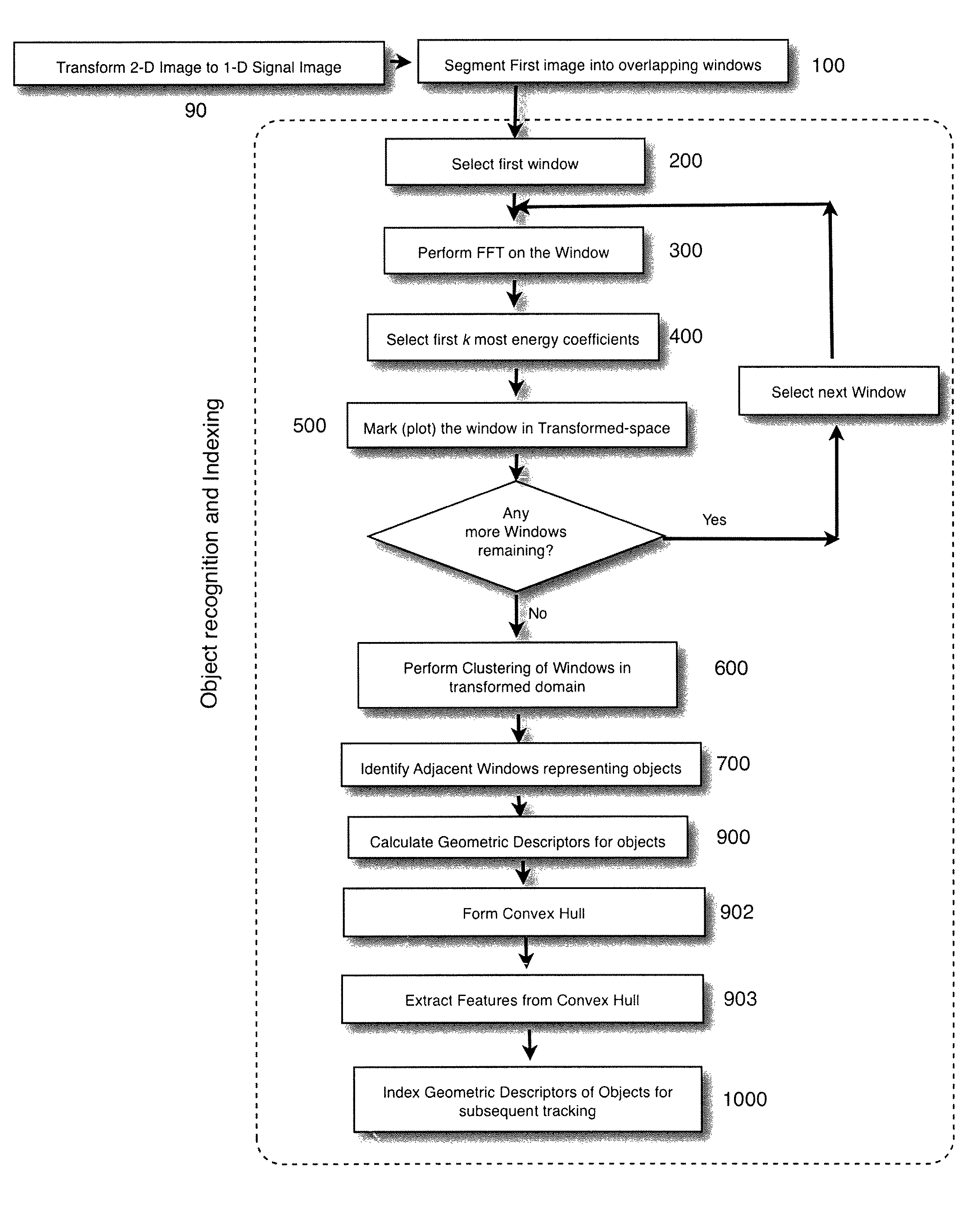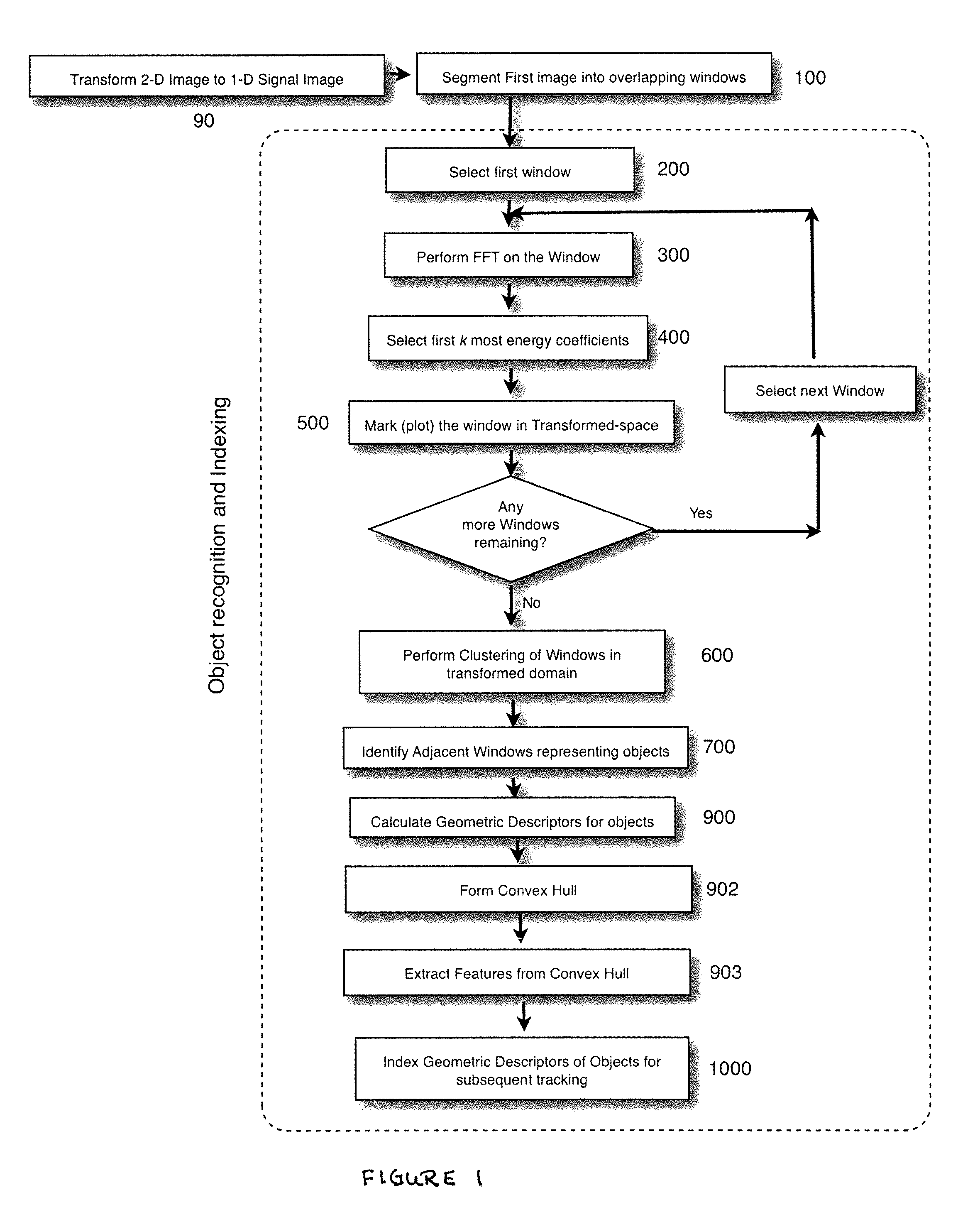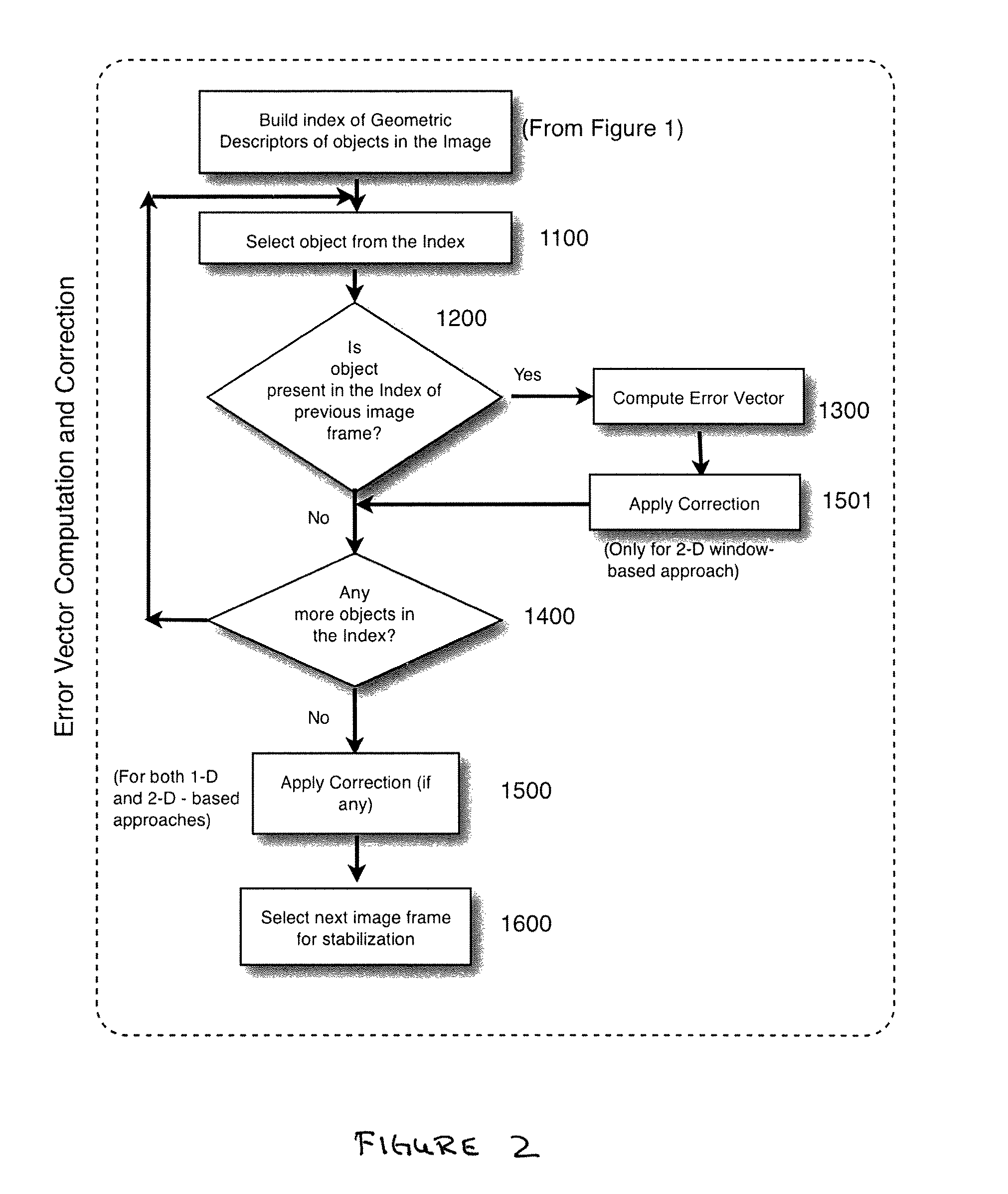Method to stabilize a moving image
a moving image and image technology, applied in the field of methods of stabilizing an image, can solve the problems of subject's eye moving, eye being observed through the confocal microscope by the ophthalmologist is not necessarily stable or stationary, and difficulty in interpretation of observed images
- Summary
- Abstract
- Description
- Claims
- Application Information
AI Technical Summary
Problems solved by technology
Method used
Image
Examples
first embodiment
I FIRST EMBODIMENT
A 1-D Signal Representation
A.1 Image Capturing
[0048]The raw unstabilized confocal videos are obtained at the rate of 29 frames / sec. Although theoretically one can extract and process 29 frames from a one-second long video, it is not desirable for the following reasons:[0049](1) The drifting or destabilization of objects in these frames may not be prominent in subsequent frames, and performing a computational stabilization procedure on subsequent frames is not an efficient use of resources.[0050](2) Experiments have shown that the stabilization technique employed on adjacent subsequent frames is more susceptible to Gaussian or white noise.
[0051]For these reasons, it is more efficient to depopulate the sampled frames. The sample rate should be fine enough to keep the presentation displayed on the monitor from jittering due to too coarse depopulation. The actual depopulation can vary with the application, and one acceptable rate was to depopulate the frame date set by...
second embodiment
II SECOND EMBODIMENT
Using a 2-D Signal
[0109]This embodiment is similar to that of the 1-D signal embodiment, and the description will concentrate on the differences between the two embodiments.
A.1 In this embodiment, the steps of Image Capturing (A.1) is identical to the 1-D embodiment. Frame data may be depopulated as needed.
A.2 The signal synthesis step in this embodiment is lacking as this embodiment retains the 2-D image as the working signal.
A.3 Signal Partition
[0110]For each frame, partition the frame into overlapping 2 dimensional windows (step 100FIG. 1), where the windows are aligned along a path through the frame. For instance, one embodiment utilized the following horizontally orientated path for traversing the frame (a type of zig zag):
[0111]
In this embodiment, an 8×8 pixel window was utilized with adjacent windows having an overlap of 5 pixels with the proceeding window, where the overlap is in the direction of movement along the path through the frame, hence, it is not...
PUM
 Login to View More
Login to View More Abstract
Description
Claims
Application Information
 Login to View More
Login to View More - R&D
- Intellectual Property
- Life Sciences
- Materials
- Tech Scout
- Unparalleled Data Quality
- Higher Quality Content
- 60% Fewer Hallucinations
Browse by: Latest US Patents, China's latest patents, Technical Efficacy Thesaurus, Application Domain, Technology Topic, Popular Technical Reports.
© 2025 PatSnap. All rights reserved.Legal|Privacy policy|Modern Slavery Act Transparency Statement|Sitemap|About US| Contact US: help@patsnap.com



